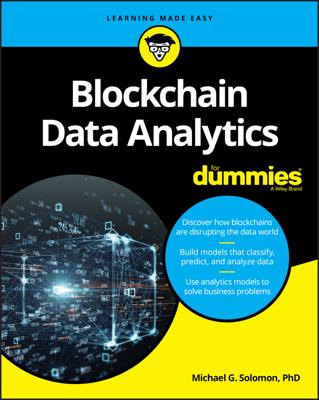 ©Shutterstock/NicoElNino
©Shutterstock/NicoElNinoIf you already depend on blockchain technology to store data, the decision to use that data for analysis is a lot easier to justify. Here, you examine some reasons why blockchain-supported analytics may allow you to leverage your data in interesting ways.
Leveraging newly accessible decentralized tools to analyze blockchain data
You’ll want to learn how to manually access and analyze blockchain data. But, it's also important to understand how to exercise granular control over your data throughout the analytics process, higher-level tools make the task easier. The growing number of decentralized data analytics solutions means more opportunities to build analytics models with less effort. Third-party tools may reduce the amount of control you have over the models you deploy, but they can dramatically increase analytics productivity.The following list of blockchain analytics solutions is not exhaustive and is likely to change rapidly. Take a few minutes to conduct your own internet search for blockchain analytics tools. You’ll likely find even more software and services:
- Endor: A blockchain-based AI prediction platform that has the goal of making the technology accessible to organizations of all sizes. Endor is both a blockchain analytics protocol and a prediction engine that integrates on-chain and off-chain data for analysis.
- Crystal: A blockchain analytics platform that integrates with the Bitcoin and Ethereum blockchains and focuses on cryptocurrency transaction analytics. Different Crystal products cater to small organizations, enterprises, and law enforcement agencies.
- OXT: The most focused of the three products listed, OXT is an analytics and visualization explorer tool for the Bitcoin blockchain. Although OXT doesn’t provide analytics support for a variety of blockchains, it attempts to provide a wide range of analytics options for Bitcoin.
Monetizing blockchain data
Today’s economy is driven by data, and the amount of data being collected about individuals and their behavior is staggering. Think of the last time you accessed your favorite shopping site. Chances are, you saw an ad that you found relevant. Those targeted ads seem to be getting better and better at figuring out what would interest you. The capability to align ads with user preferences depends on an analytics engine acquiring enough data about the user to reliably predict products or services of interest.Blockchain data can represent the next logical phase of data’s value to the enterprise. As more and more consumers realize the value of their personal data, interest is growing in the capability to control that data. Consumers now want to control how their data is being used and demand incentives or compensation for the use of their data.
Blockchain technology can provide a central point of presence for personal data and the ability for the data’s owner to authorize access to that data. Removing personal data from common central data stores, such as Google and Facebook, has the potential to revolutionize marketing and advertising. Smaller organizations could access valuable marketing information by asking permission from the data owner as opposed to the large data aggregators. Circumventing big players such as Google and Facebook could reduce marketing costs and allow incentives to flow directly to individuals.
There is a long way to go to move away from current personal data usage practices, but blockchain technology makes it possible. This process may be accelerated by emerging regulations that protect individual rights to control private data. For example, the European Union’s General Data Protection Regulation (GDPR) and the California Consumer Privacy Act (CCPA) both strengthen an individual’s ability to control access to, and use of, their personal data.
Exchanging and integrating blockchain data effectively
Much of the value of blockchain data is in its capability to relate to off-chain data. Most blockchain apps refer to some data stored in off-chain repositories. It doesn’t make sense to store every type of data in a blockchain. Reference data, which is commonly data that gets updated to reflect changing conditions, may not be good candidates for storing in a blockchain.Blockchain technology excels at recording value transfers between owners. All applications define and maintain additional information that supports and provides details for transactions but doesn’t directly participate in transactions. Such information, such as product description or customer notes, may make more sense to store in an off-chain repository.
Any time blockchain apps rely on on-chain and off-chain data, integration methods become a concern. Even if your app uses only on-chain data, it is likely that analytics models will integrate with off-chain data. For example, owners in blockchain environments are identified by addresses. These addresses have no context external to the blockchain. Any association between an address and a real-world identity is likely stored in an off-chain repository.Another example of the need for off-chain data is when analyzing aircraft safety trends. Perhaps your analysis correlates blockchain-based incident and accident data with weather conditions. Although each blockchain transaction contains a timestamp, you’d have to consult an external weather database to determine prevailing weather conditions at the time of the transaction.
Many examples of the need to integrate off-chain data with on-chain transactions exist. Part of the data acquisition phase of any analytics project is to identify data sources and access methods. In a blockchain analytics project, that process means identifying off-chain data you need to satisfy the goals of your project and how to get that data.
Want to learn more? Check out our Blockchain Data Analytics Cheat Sheet.

